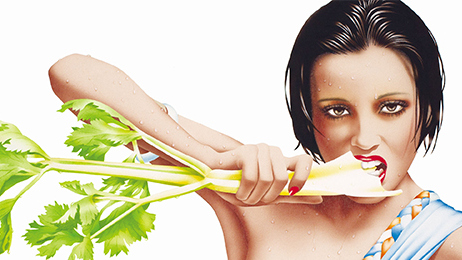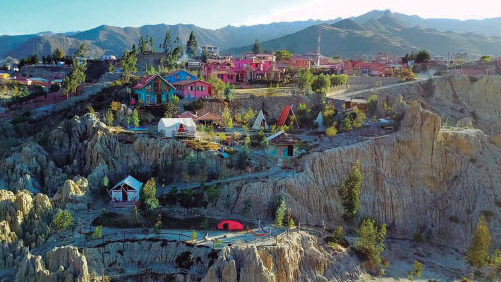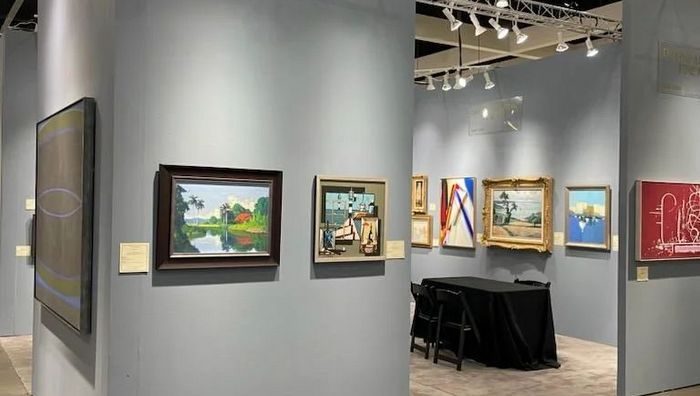There’s no social layer, group or status racism is at odds with. You may fall victim of racism no matter how deep your pockets are, the place where you live or the position you hold down.
It’s clear that speakers and leaders out of any conflict and in nearly all historic moments do not endure in a harsh way the consequences of those things they fight against. To the best of my recollection, Lenin’s brightest idea in his book ¿?mo ?e????1 is the need of a party that could lead the revolutionary struggle because consciousness was supposed to be brought to the masses “from outside.”
Otherwise, they could get mixed up with a “boneless and shortsighted giant” who doesn’t manage to stand up as something different to its activity and mull over it on a regular basis. That’s quite similar to the scholastic thinkers and the Mendicant Orders back in the Middle Age that Humberto Eco recounts in The Name of the Rose in Fray Guillermo’s own words: “those are games for us who are men of doctrines. The simples have other problems of their own […]”.2
Art and its products belong to this same sphere, superstructure, or better yet in Grams’ terms, to the civil society. Can anybody tell me I can’t speak or write about the Gulf War just because I’m either Arab or Iraqi? Did anyone ever tell Lydia Cabrera that for her Monte to be a legit piece she had to move out of her comfy and bourgeois-style estate to the Marina neighborhood in Matanzas? Or was Fernando Ortiz supposed to change the color of his skin to have the right to stand up for African culture? Or should Sandra Ramos, Esterio and Kcho stop taking about the exodus, migrations and trips when they can travel in and out of the country as they see fit? Is it necessary for a raft to be a genuine artwork to be designed, built, drawn, sculpted… by a rafter?3
A good case in point is Shirin Neshat. I’m bored to the bones in front of my TV set as I watch a documentary on her life and work. I didn’t watch the beginning, so I don’t know the name of the short film. Well, the Iranian artist looked quite sophisticated: her lanky hair curled in an upsweep, like a Spanish hoofer; a V-neck blouse like those that have been catching on these days, with little plaits sewed to the sleeves; and silver bracelets in both her wrists. Too Andalusian, yea, and in a fancy apartment. Quite a contrasting image to the one I have described when writing about her works, both in photography and video. And the pill gets tougher to swallow when she says the suffering she tries to represent in her works is just her own sorrow.
But, does all this make Shirin Neshat’s pieces less legitimate when she doesn’t even live in Iran? Is it reprehensible from an ethic standpoint? Or should we be grateful for her works because they are teaching the Western world about a universe that’s completely unknown to all of us, with its rules and specific guidelines? Hasn’t “the other” been known better and more deeply through the symbolic production that art generates?
I admit I have no definitive answers, though they underlie in the questions themselves. And finally, those of us who call ourselves critics, do we have to be artists to talk and write about art?
II
Puff
Back in 2002, art critic and editor David Mateo interviewed Roberto Diego for “La Voz Ilustrada,” (The Illustrated Voice) a section of the Dedalo magazine, the official organ of Cuba’s Young Artists Association. In there, answers are not written, but rather drawn and illustrated. Among lots of topics, David asked him about the greatest privilege of his life, and Diago simply said, “the joy of living.”
This reply puts us before the evidence of a conviction, far from the quest for the right title for this or that exhibit, far beyond the circumstances or conveniences. It all seems that’s what negroes are left to do.
The same way we have lived out Eating Knives, we now know that Staying Alive is a slogan of wisdom that conveys a certain hope for resistance, roughly verging on a survival underscored by that naïve-looking privilege called the “Joy of Living”. A confession people utter unwillingly, grudgingly and reluctantly. It’s virtually the denial of that reason that’s always inquiring about the need of our own existence as human beings. It seems as if the Nietzschean arguments about God’s death, or Max Weber’s on that iron cage modernity has turned into, or the petit bourgeois disenchantment of a steppe wolf, are not good enough for negroes who have in Roberto Diago some kind of socializing medium in the artistic field and they can’t find better words to say than a scornful and laconic so what?
Brought into history in the folksy version of the eunuch, nixed when it comes to talking about our origins at a biological and cultural level, demonized when it’s time to refer to most epidemics and viruses, the negro has had no better choice than putting on a hefty armor from which he utters, in some sort of ancestral gesturing, that he has come in and out of all existential tangles. If we bring this up to the Cuban context, the negro was an unknown character during the Republican period,4 with the sole exception of Lazaro Peña. The biased euphemisms that “negroes are good for nothing except for sports and music” or that “not all wrongdoers are black but nearly all negroes are wrongdoers” come to mind. Above all, we notice that so much marginalization and conflict were bypassed altogether in a decade in which the fine arts on the island nation were bragging about having left behind all social and individual collisions of the late 20th century’s Cuba. For Julio Cesar Guanche, this stunning quotation, “Cuban nationalisms of the 19th century had ruled out the negro. Even though Jose Marti laid out an inclusive project of a homeland for all, the black world and the conscious exclusion endured by the members of that race, sidelined from the cultural discourse and politics, entered the 20th century without any radical questioning”.5 That’s why this treadmill gibbering about the issue will always be not only legitimate and necessary, but also profoundly endless.6
Those are the efforts that Roberto Diago has pulled off, who has left behind the lines of his well-known drawings to shrink them down to pure spelling, written texts stripped of the Basquiat look7 and Antonia Eiriz’s figurative violence. They stay, of course, as a breath of life, an inflow, a vocation, a careless whisper of this linguistic quirk that now incarnates light boxes, giant posters, installations, video showings, this time around tightening the vigor, the moxie this conflict demands, with a visual approach that verges more on reckoning than on the spontaneity of the drawing lines or the passion boxed in the confrontation with the two-pronged dimension seen in the eating knives expression, in which that tightening reached its peak.
Light boxes in which most of the times the negro is “portrayed” in the foreground, mounted on rustic pieces of wood and in a brief text that serves as a title for each and every one of them; video presentations whose main themes are rundown shacks like the ones built in the inner city slums that are so commonplace in the big burgs as residues or unmistaken stamps of an unfinished modernity; big-format photographs in black and white. The Joy for Living, for its part, lets the high tech melt incredibly well into the rusticity and visual approach of wood and the ambiences. However, the sophisticated packaging does not drain away the energy and strength of the images. The lack of that mysticism and that naïve appearance of his works do not pull any punches at all; those images are so genuine that they remain equally weighty and stalwart every step of the way. And this also happens because those images are stripped of those folksy shades and wrappings that at the end of the day sweeten and blur reality. Diago traded the quasi-fragile, yet strong and energetic lines of his drawings for the coldness of the lens, the succession of the video presentation. That line has dwindled to graffiti because, fortunately, he never drops the text.
And this is owed to the documentary notion of the findings that Diago wields in this exhibit. Not only of the findings, but also of these experimented pieces that were deigned on the basis of their participation in La California poor quarters during the 8th Havana Art Biennial back in 2003. It’s all about a going that for Panama’s Brooke Alfaro could provide an interesting link. But since Alfaro is basically focused on the video presentations without any distinctions whatsoever in terms of race, they do become far more inclusive from an ethnic viewpoint. “Joy for Living” comes to me as the closing of a more democratic circle as far as the treatment of formal structures are concerned, structures that do announce the preeminence of the volumetric and the sculptural as one of the most distinctive features of Roberto Diago’s upcoming artistic proposals.
III
Black Power and the Piece of Chalk
The fingers of one of my hands are good enough to count the Cuban artists who have vehemently and insistently addressed the blackness issue, regardless of the outcomes and ways of doing things: sculptor Teodoro Ramos Blanco, who never stopped delivering a sweet and exotic variant of the negro; Rene Peña, whose anthropological incursions have evolved into excellent photographs; Eduardo Roca (Choco), who has struck a fair balance between myth and figuration; Manuel Mendive, to whom we owe lovely artworks from the 1960s and 70s, and Roberto Diago, neither a musician nor a sportsman, who hasn’t yet imagined a piece of his own that doesn’t deal with the topic.8
The negro is once again the subject and object of his obsessions, but this time up out of the marginal and into the mainstream; so much suffering is now making him happy; from defendant to plaintiff. No more supporting roles; now he’s the hero. Both the tale and the co-tale come together in him because he’s making history, not from ruling or pseudo-intellectual doctrines, but rather from ancestral ethical precepts that have helped him get by and resist the most hostile conditions. He’s playing his role from the most precarious and provisional daily going of life, a condition that’s becoming a key player in a way of thinking that goes beyond the color of the skin: the provisional thinking.
That’s probably why the negro, within the contemporary social scene, is fit like no other human being to put up with the ups and downs of its ever-changing codes and mechanisms. The joy of living is not only a privilege, but a resistance mechanism for daily life. It might seem to go against the grain when voiced by someone else, especially in a context where despair and disappointment have captured million of people.
This fills the exhibit with categorical irony. However, I’ve always thought that a negro’s laughter is far more than the mocking and jeering of hierarchies and situations. The negro holds his own, refuses to be an outsider and tolerance is his main possession. He knows when to slack up to start things out, even though he might not be aware of that attitude or his own wisdom. That, and no other, has been the cause of his syncretism.
And so, Joy of Living results in the conjunction of alleged opposites, of made-up binaries that only exist as such in the human thinking: the sophisticated and the precarious, disappointment and despair, artistic experience and the on-the-spot registry… Yet his is not a plain registry of what’s going on, one of those documents some people call objective. Behind it, there’s an intention that conditions the lens of the camera and the view rendered in it: subvert the stereotypes, the other epic campaign, the new face, the new architectures that are not precisely beautiful.
You must dare see through a poet’s eyes, dare breach the matter that makes up the visible things to land in each and every phenomenon’s metaphysical universe. Thus, when I blast the documentary film I refuse to keep saying how true things really are rather than seeing how those things actually are.9
This and no other form of subversion is what I’ve referred to. It’s not about going back to those images from the so-called “Cuban epic” of the 1970s, neither portraying the peanut-hawking negro nor the female Santeria priest tossing her cards next to the Havana Cathedral in the 21st century. The heart of the matter lies in twisting the sense, in giving the images just another content, of inserting them in a conscious and coherent fashion in an artistic practice that is not solely reserved for photography, but also for a chance to install and project, away from the alien and weird looks “blackness” is usually treated with.
In this exhibit, the going is not the same we’ve been accustomed to when we used to watch a piece by Roberto Diago. However, the purpose is still out there, untainted. Restore the negro’s lineage or at least give account of its existence.
Fiber continues to be the result of anguish, of those scar marks that have been mutating for centuries behind that state of grace called laughter.
[August 2005, wishing to fit inside a freezer.]





Previous publication A Tico in Habana
Next publication Cildo Meireles. Against hegemonic ideas in art
Related Publications

How Harumi Yamaguchi invented the modern woman in Japan
March 16, 2022
Giovanni Duarte and an orchestra capable of everything
August 26, 2020











